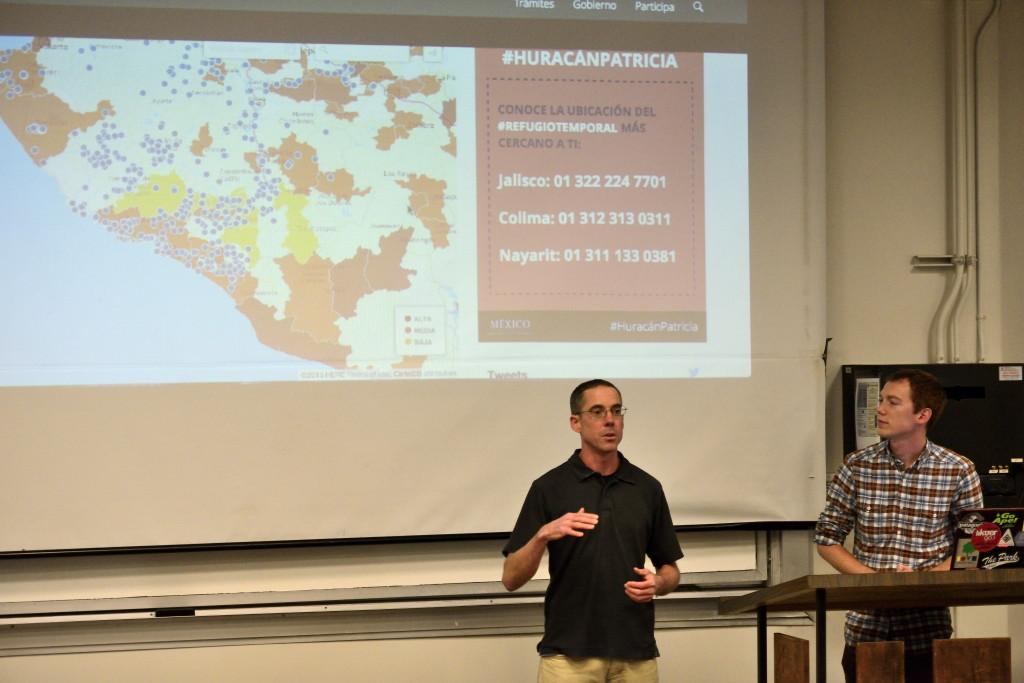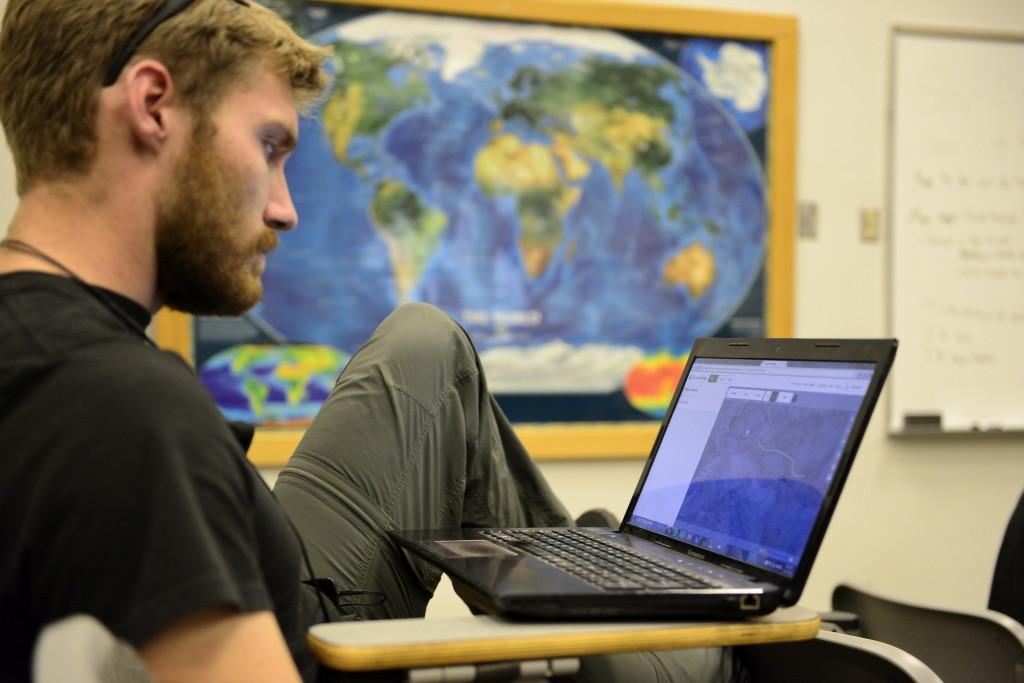About 20 people gathered in OSH on Monday evening to participate in a rapid response event, held by the U geography club, regarding Hurricane Patricia.
The group, consisting of students from the U and local universities and community members, were given a crash course on crisis mapping using a platform called OpenStreetMap (OSM).
Geography graduate student Seth Bishop, a member of the geography club, said OSM is essentially Wikipedia for maps.

The interface allows participants to trace over satellite images and map out items such as buildings, roads, streams and rural paths in the coastal region of Mexico affected by Hurricane Patricia. The difference between OSM and something like Google Maps is that the data is exportable.
Tim Edgar, geography graduate student and club member, said many parts of this area have not been accounted for.
“People like to think the world is completely mapped,” said Edgar, “but there are actually a lot of places that we don’t have much information for.”
Having these areas charted allows responders to assess damages to buildings and infrastructure and plan resource distribution routes.

Event attendees worked at mapping pre-storm digital images, as post-storm images have not yet become available. Edgar said this work is important because it allows for before-and-after assessment of storm impacts. Once post-storm images become available, people will be able to log in to OSM and work on the new data.
When Edgar heard about the potential impacts of Hurricane Patricia, he said he felt informing community members about crisis mapping was important and approached Bishop about organizing the event. Though the storm was not as serious as originally predicted, both Bishop and Edgar think these efforts are important.
“The data and imagery is actually a lot more abundant than volunteers mapping it,” said Bishop.
Edgar said introducing community members to the OSM technology allows many more people to participate in crisis relief efforts.
Bishop said OSM has had many different projects for different humanitarian crises around the world, and more continue to be added.
@NikiVenugopal











